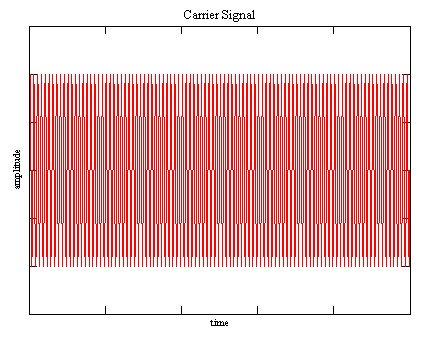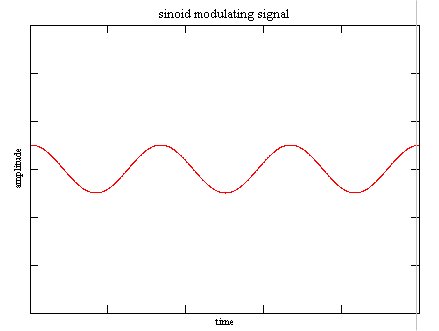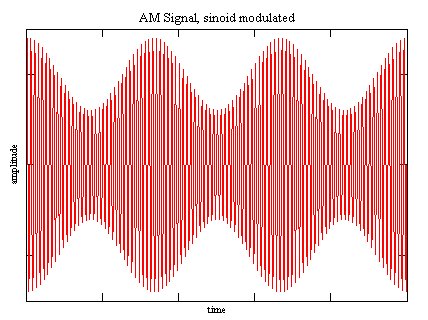Amplitude modulation: Difference between revisions
No edit summary |
No edit summary |
||
| Line 10: | Line 10: | ||
==Mathematical Setting== |
==Mathematical Setting== |
||
The output signal is the simple product of incoming signal and Carrier Signal |
The output signal is the simple product of incoming signal and Carrier Signal with frequency ''f'': |
||
''output(t) = input(t) * sin(f * t)'' |
|||
''TODO: it would be nice to type formulas in TeX, is this working in this wiki?'' |
|||
| Line 39: | Line 43: | ||
''it would be nice to have a picture showing how AM signals in the frequency spectrum behave and how much bandwidth they allocate. A short overview of AM-related problems would be nice, too. Has anybody of you this info handy?'' |
''it would be nice to have a picture showing how AM signals in the frequency spectrum behave and how much bandwidth they allocate. A short overview of AM-related problems would be nice, too. Has anybody of you this info handy?'' |
||
''what about noise sensitivity?'' |
|||
==Links== |
==Links== |
||
Revision as of 14:20, 27 September 2004
What is AM?
Amplitude Modulation is the done by modulating the Amplitude of an sinoid Carrier signal using the incoming signal.
The Carrier signal is a sinusoid with a fixed Frequency at least twice as high as the highest frequency occuring in the spectrum of the incoming signal. Usually a much higher frequency is choosen.
Amplitude Modulation schemes have been widely used in Analog Radio.
Mathematical Setting
The output signal is the simple product of incoming signal and Carrier Signal with frequency f:
output(t) = input(t) * sin(f * t)
TODO: it would be nice to type formulas in TeX, is this working in this wiki?
An Example

|
Carrier Signal in frequency domain (to be added) |

|
Modulating Signal in frequency domain (to be added) |

|
AM Signal in frequency domain (to be added) |
Special Kinds of AM
- DSSC, Double Sideband Supressed Carrier
- SSB, Single Side Band
- Residual Sideband Modulation (modulation used for analog TV applications)
- QAM, Quadrature Amplitude Modulation
Aquired Bandwidth
it would be nice to have a picture showing how AM signals in the frequency spectrum behave and how much bandwidth they allocate. A short overview of AM-related problems would be nice, too. Has anybody of you this info handy?
what about noise sensitivity?